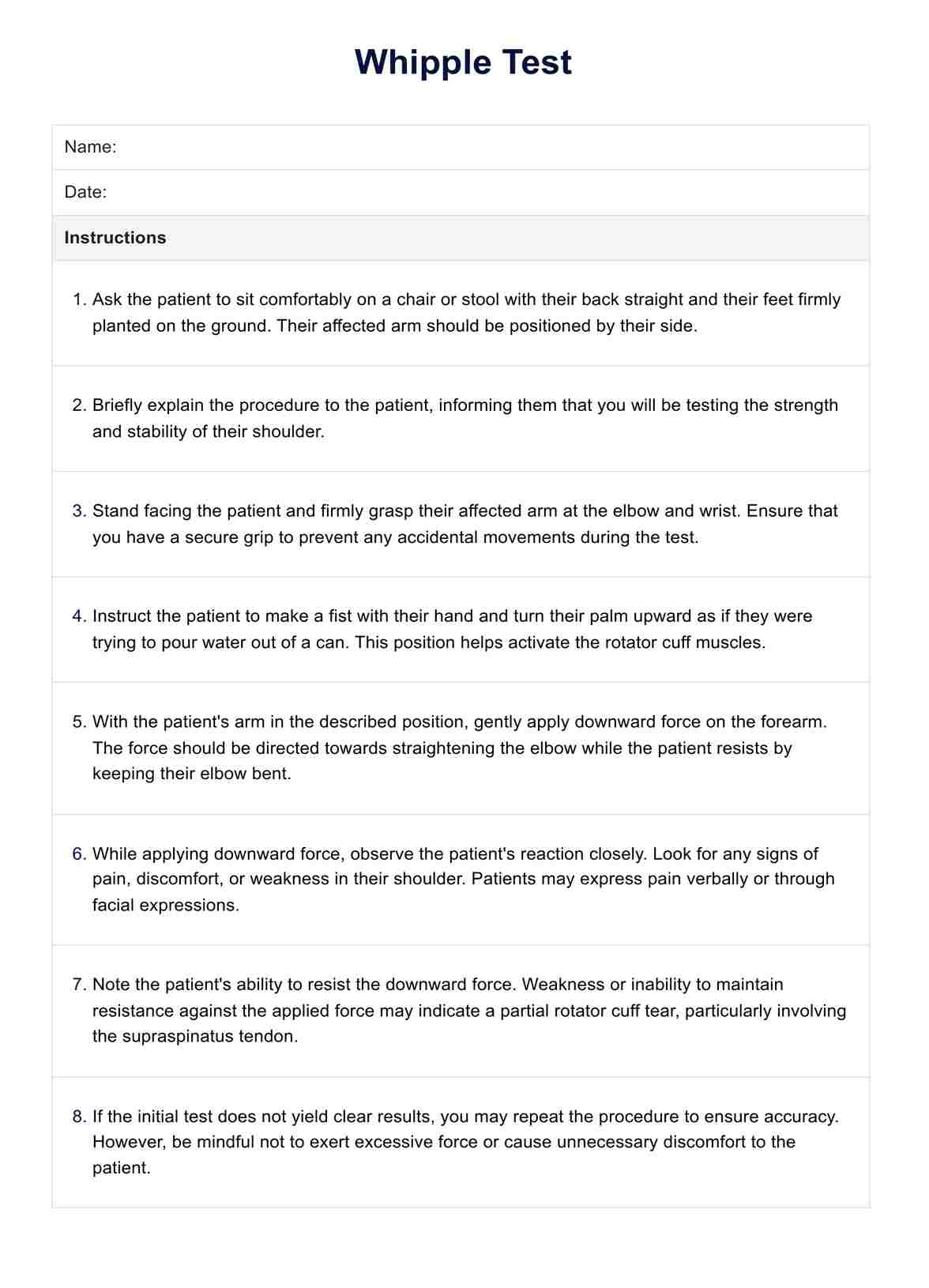The Whipple Test is a specific physical examination maneuver used to help diagnose conditions related to the shoulder complex, including superior labrum anterior to posterior (SLAP) tears, which involve the superior labrum.

Whipple Test
Access a free Whipple Test PDF template for your physical therapy practice. Streamline your documentation with our free form.
Use Template
Whipple Test Template
Commonly asked questions
While the Whipple Test can be a helpful screening tool, further imaging or diagnostic tests may be necessary for a definitive diagnosis.
No, the Whipple Test is a non-invasive and safe procedure. However, if performed improperly, it could cause discomfort or injury to the patient's shoulder.
EHR and practice management software
Get started for free
*No credit card required
Free
$0/usd
Unlimited clients
Telehealth
1GB of storage
Client portal text
Automated billing and online payments











